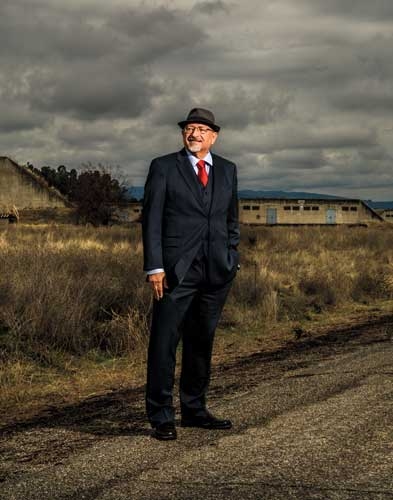Several shuttered military bases in the region offer thousands of open acres for development, a gold mine in this in-demand part of the Bay Area. But turning the outdated sites into modern communities requires huge amounts of time, money, and sheer will.
By Andrea Vasquez Nelson // Photography by Christie Hemm Klok
Published:
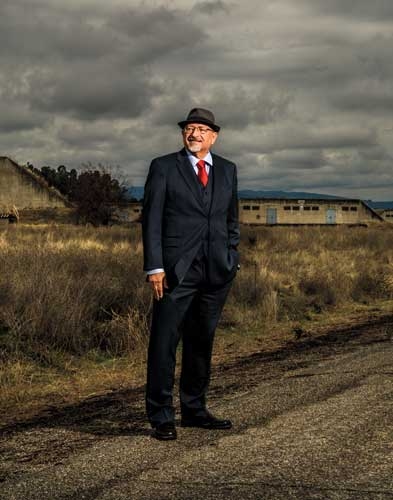
Edi Birsan, former Concord mayor
On an otherwise ordinary Friday late last June, a phone call woke then–Concord Mayor Edi Birsan from an afternoon nap. Time magazine was reporting that an internal United States Navy memo had Concord on a short list of potential locations to house tens of thousands of migrants caught illegally crossing the border—and the news reporter on the other end of the line wanted more details.
So did the mayor, who was hearing the news for the first time.
The reporter promptly sent Birsan the article, which outlined plans to hold up to 47,000 immigrant detainees in an “austere” detention center at the Concord Naval Weapons Station, a defunct military base in the northeast part of the city. This was in response to the zero-tolerance immigration policy the White House had declared the month before, which had triggered a surge of arrests separating nearly 2,000 migrant children from their parents, straining holding facilities, and exacerbating the backlog in immigration courts. If the Department of Homeland Security called on the military for help, the memo estimated, it would cost about $233 million per six months to build and operate a tent city to hold 25,000 people for up to a year.
Birsan was astounded at the suggestion: “I said, ‘Is this Time magazine or Time magazine: The Onion [edition]?’ I mean, are you kidding me?” Birsan has been involved in redevelopment efforts since before he was in city hall, and in more than a decade he had never heard plans like these.
Birsan knew his community would push back. Three hundred people flooded Concord’s next City Council meeting, where Birsan and his colleagues heard hours of public comment that persisted past midnight. East Bay Congressman Mark DeSaulnier (CA-11) called the proposal “madness” and an “evil policy,” likening it to Japanese internment camps.
Amid the cacophony, Birsan also thought of all the work that would go out the window. The naval facility had stored weapons and ammunition for ships coming in and out of Port Chicago from World War II until its closure in 2005. After 12 years, roughly $24 million invested by the city and developer (among others), and thousands of hours of planning and community meetings, the city had formed a plan to repurpose the outdated military base into a residential, commercial, and community space and was about 12 months from getting the first parcel of land for the multiphase project. If the navy kept the property for a makeshift detention center, it could mean scrapping more than a decade of work.
“We would have to restart,” Birsan says.
Within a few days, Contra Costa County Sheriff David Livingston said there were no plans “at this time” to use the former Concord Naval Weapons Station for relocation camps. Confusion and outrage receded, leaving the city to carry on with the redevelopment of more than 5,000 acres of hills, grassland, and old military bunkers—a task as immense as the site.
The military’s Base Realignment and Closure (BRAC) commission shuttered more than 350 military bases nationwide between the late 1980s and mid-2000s. In the East Bay alone, the former Concord Naval Weapons Station, Alameda Naval Air Station, Oakland Army Base, and Naval Station Treasure Island present enormous opportunities—literally thousands of acres—to create jobs, build housing, and integrate cutting-edge technology into new communities. Just as formidable, however, are the challenges of designing a plan that both satisfies and serves the community on sites that often lack basic infrastructure and must be scoured for dangerous remnants of days long past (like the small World War II-era rockets found during a cleanup on the Concord base).
Concord officials are up to the task. Coincidentally, both Birsan and Carlyn Obringer—who became Concord’s mayor in December after a City Council reorganization—jumped into local politics because they wanted to help with the base redevelopment.
“I saw the incredible potential,” Obringer says. “One of the real benefits is you don’t have to rip out roads or build around existing infrastructure. You can start from scratch.”
Concord on the Rise
Concealed in a quiet Concord neighborhood of ranch-style homes, manicured lawns, and trimmed hedges, ghost towns of the base’s former military housing—with names like Victory Village and Quinault Village—decay behind chain-link fences with signs declaring “U.S. Government Property No Trespassing.” Beyond the fences, a paved road winds past single-story homes painted peachy tan and faded blue, the windows boarded and neglected lawns now yellow and brittle.
“There isn’t even running water at this point in time,” Obringer says.
Eventually, the 5,100-acre site will boast 13,000 housing units, six million square feet of commercial space, thousands of acres of parks, a sports tournament field, autonomous vehicle testing facilities, and a four-year university—each increasing Concord’s population and accessible land by 25 percent, says Birsan.
But that’s a long way out.
“This really is a 30-, 40-year process beyond the 12 years that have already been invested,” Obringer says.
Over the course of those 12 years and 84 public meetings, Concord residents told planning officials that they want green space, trails, parking, solar energy, fire and police stations, community gardens, and unobstructed views of Mount Diablo. Concord officials want the project to be economically sustainable and seamlessly integrated into the community. The master developer, Lennar, (which has taken on former bases in San Francisco and Irvine) funneled those wish lists into a multiphase plan, early iterations of which proposed transforming 500 acres into mixed-use buildings, housing, parks, and community centers and included a shuttle to the North Concord/Martinez BART station.
But before a single shovel hits dirt, the navy must inspect and clean any toxic contamination on the base. Nearly 50 years of weapons and ammunition storage exposed the land to such toxins as lead and arsenic. What’s more, a “special weapons” area on the base has drawn speculation that atomic bombs were once housed here.
Locals are watching closely after learning that contaminated soil samples were fraudulently replaced with nontoxic ones at a cleanup at San Francisco’s Hunters Point. The former naval shipyard was used for repairs, cleaning ships exposed to nuclear testing, and radiation experiments and was later listed as a U.S. Environmental Protection Agency (EPA) Superfund site, a label for contaminated areas that threaten human health and the environment. Some of the land had been given to the city and redevelopment was underway when the EPA and navy discovered the firm in charge of the remediation had falsified data.
The navy can only transfer land that is free of toxic contamination, so as cleanup continues at the Concord base (also a Superfund site), the navy will hand over parcels of the land in phases. The first 1,200 acres for Phase One are expected to transfer later this year.
Focus on West Oakland
Margaret Gordon knows that these projects take time. The no-nonsense West Oaklander was one of the first community members to sit on the redevelopment advisory group for the decommissioned Oakland Army Base, 360 total acres of industrial land situated by a freeway, a waste treatment center, and the Port of Oakland.
“One thing is for sure: This whole base conversion has not been a co-benefit to the most vulnerable of these communities,” Gordon says, since the development has not created as many jobs as expected.
Planning for the army base started several years ago, and proposals included an auto mall, casino, big-box store, hotel, movie theater, and theme park. The prevailing plan will create the Oakland Global Trade and Logistics Center, a nearly one-million-square-foot shipping hub where companies will transfer cargo between ships, trucks, and trains. (The second phase of construction wrapped up in 2017.)
But locals worry that the boost in industry will increase rail traffic and pollution in the neighborhood. As it is, life expectancy in West Oakland is nearly seven years shorter than the average for Alameda County, largely due to pollution-related diseases, and research shows that dirty air stunts children’s lung growth.
“Every day that goes by, kids are being permanently damaged,” says Brian Beveridge, a West Oaklander and the codirector of the West Oakland Environmental Indicators Project (WOEIP). Beveridge joined the nonprofit in 2004 and now works alongside Gordon, the cofounder and codirector. WOEIP, a community-based environmental justice group, advocates for the neighborhood’s residents—overwhelmingly low-income people of color.
“They may die because of this stuff. We can’t do it fast enough,” Beveridge says.
To mitigate the pollution, the project allocates more than 20 acres for two large commercial recycling companies to relocate from West Oakland, as well as 30-plus acres of big-rig parking—all in an effort to pull the industrial activity (and exhaust fumes) out of the neighborhoods and centralize it on the base. The plan also calls for low-emission construction and operations equipment and restricts how long machines can sit idling.
Oakland Army Base has long been a bustling terminal, with tens of thousands of soldiers and about 25 million tons of supplies passing through to the Pacific during World War II. It became a city within a city, with a hospital, post office, library, grocery store, and bowling alley—and nearly 7,000 jobs were eliminated when the base closed in 1999.
Creating new jobs to replace the lost ones became a major focal point in the redevelopment, especially considering the site’s access to the port and freeway.
“Generally speaking, jobs in port-related logistics and warehousing were better paying, career-oriented jobs, whereas retail [and] commercial jobs … tend to be lower paying, shorter-term [noncareer] jobs,” says John Monetta, the project manager for the army base.
WOEIP and various other organizations spent roughly two years negotiating a Good Jobs Policy for the project, which demands living wages, 50 percent local hires, protections for subcontractors, and a Ban-the-Box policy (which removes the check box for criminal records from employment applications). The agreement also creates the West Oakland Job Resource Center, which trains low-income and disadvantaged workers for skilled construction, transportation, and distribution jobs.
In the first four years of construction, about half of the work was done by Oaklanders. But in the West Oakland neighborhood, Beveridge only counts about 22 people who got new jobs from this project.
“In a community that probably needs about 1,000 jobs, we managed to get [around] 22 people hired,” Beveridge emphasizes.
As the project trudges forward, the work continues on the base as well as in the local community.
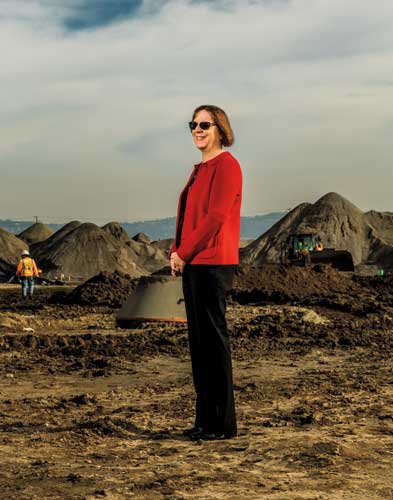
Alameda Point
In nearby Alameda, public reaction has evolved since the former Alameda Naval Air Station shut down in 1997. At first, the community was focused on the 18,000 lost jobs, says Debbie Potter, the city of Alameda’s point person for the redevelopment of the base, now called Alameda Point.
“We were determined to develop a plan that replaced those jobs and rebuilt the vitality of the west end of town,” Potter says.
The following years brought ups and downs, with a couple of failed projects, two flopped master-developer plans, and ultimately a different approach: The city engineered its own master plan, bringing on specialty developers for smaller land parcels. Potter says this created a plan better tailored to the community’s priorities.
“[It’s important to] put strong plans in place so that the community feels very tied to the outcome, and there’s a real sense that what happens at Alameda Point is going to have benefits for the surrounding neighborhoods and city as a whole,” Potter says.
Three main themes guided the planning process: jobs, transportation, and mixed-income housing.
The plan includes 800 housing units (a quarter of which will be affordable), more than a half million square feet of commercial space, 15 acres of parks and open space, and a new ferry terminal. The first “for rent” signs will be up as soon as 2021.
In Alameda—where average home values hover around $1 million—housing is scarce, as in the rest of the Bay Area. Projects like these will help, but they can’t fix the problem on their own, says Linda Mandolini, president of Eden Housing, an affordable housing nonprofit and development partner for Alameda Point.
“Projects like Alameda Point can make a significant difference,” she says. “They’re super important and, frankly, if we did more planning on that scale, I think we’d have more housing.”
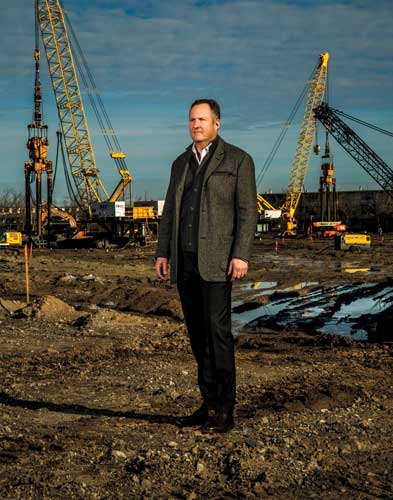
Sustainable Islands
Chris Meany, cofounder of San Francisco-based development company Wilson Meany, faces the same reality as he creates the newest neighborhood in one of the Bay Area’s most crowded cities: San Francisco.
Meany’s firm is part of the redevelopment team for Yerba Buena and Treasure islands, collectively a major navy training center and embarkation point in World War II. The flat, man-made shores of Treasure Island will eventually hold as many as 8,000 homes (up to 27 percent affordable), open space, hotels, restaurants, retail, and a ferry terminal with service to San Francisco. Officials expect the current population of 2,500 to swell to about 25,000 by the time the 400-acre project wraps in 2032.
Meany hears his share of criticism about the redevelopment—that it will obstruct views of the bay from the San Francisco side and add to bridge traffic—but it is also getting praise for its green design, including small, walkable neighborhoods and minimal need for cars. In fact, it was awarded a LEED-ND Platinum Plan certification, the U.S. Green Building Council’s highest ranking for sustainable development.
“You have a lot of projects that aspire to be environmentally friendly,” Meany notes, “but they end up just tacking on eco-friendly technology like solar power, rather than building sustainability into the blueprint.”
For example, Treasure Island’s new residential streets will be angled to cut the wind and maximize the sunlight streaming into homes and powering solar panels; by the time lighting and ventilation are installed in those new homes, it will be under the best possible conditions.
Meany is excited about the growth the development will bring to the Bay, but he is quick to add that no single project can alleviate the region’s housing crunch.
“We need to not put everybody into the exact same piece of land,” he says. “Use the extra land we’ve got; there’s plenty of it around.”
City 5.0
Concord’s top officials don’t have to look far to see what the future holds for their city—it’s already zipping around the base.
Several companies are researching driverless cars at the GoMentum Station, a testing ground on the former naval base. The approximately 20 miles of paved roadway provide ample track for the cars, with straightaways for high-speed testing and a range of road conditions to simulate real-world use. Plus, as new infrastructure is built, the sensors and technology needed to communicate with the autonomous cars can be installed in the roads and traffic signals.
“Our goal is … to help this area become Autonomous Valley, if you will,” Obringer says. “We have Silicon Valley, but we really [want to be] a hub for driverless vehicle research and testing. [We want] to keep Concord on the technological, ecological, and academic forefront.”
The idea was born as a way to create local jobs with living wages, coupled with a four-year public university that is still in the conception phase. The school may have a polytechnic or biotech focus and is slated to be built on 120 acres within walking distance of the North Concord/Martinez BART station.
The university, the smart technology, the vast parks and open spaces, the mix of housing, and the potential for jobs—they’re all integral to creating the kind of “world-class” city that Concord officials are trying to engineer.
“We’re anticipating for this city to be on the forefront—not City 2.0, but 5.0,” Birsan says.
As for Concord residents, many are excited about what the development will bring to their city, even though the project won’t be finished until around 2050.
In the meantime, “at least we like to see [the city] aggressively get the land and have the groundbreaking and start making something,” says Ajit Kaushal, a Concord resident who sits on the community advisory committee for the project. “As long as we do what the people of Concord want, that’s all I want to see.”
Base-ic History
Alameda Naval Air Station
In 1936, seeing the potential for a naval base, the city of Alameda sold the original 300-acre site to the federal government for $1.
Treasure Island
Between 1936 and 1937, using mud dredged from the Bay, the Army Corps of Engineers built Treasure Island to hold San Francisco’s future airport. Those plans were abandoned, however, when the navy moved onto the island as America prepared for World War II.
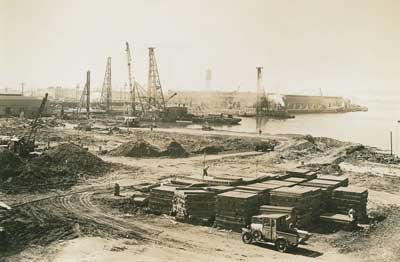
Oakland Army Base
Between 1941 and 1952, 8.5 million tons of cargo passed through the Oakland Army Base during World War II, and more than 7 million tons of cargo during the Korean conflict.
Concord Naval Weapons Station
In 1944, while loading explosives that had been stored at the base onto ships, more than 200 African American sailors were killed in the Port Chicago disaster. A total of 320 people died in the explosion, which was the biggest stateside disaster of the war and a catalyst for racial integration in the military.
Redevelopment Resources
If you live near one of the following redevelopment sites and want to learn more about what’s being built in your backyard, contact these community groups.
Alameda Point: Alameda City Council
The Alameda City Council acts in place of a community advisory group. Council meetings are held bimonthly at city hall. For more information, call (510) 747-4700.
Concord Naval Weapons Station: Community Advisory Committee
This 13-member group meets the third Tuesday of each month at the City of Concord Civic Center. For more information, contact Guy Bjerke, director of community reuse planning, at guy.bjerke@cityofconcord.org.
Oakland Army Base: West Oakland Community Advisory Group
This group is comprised of West Oakland residents, businesses, and community organizations. Meetings are held on the fourth Thursday of the month and are open to the public. For more information, contact John Monetta at jmonetta@oaklandca.gov.
Treasure Island: Citizen Advisory Board
The Treasure Island Development Authority’s advisory board meets the first Tuesday of each month at different locations. To learn more, visit sftreasureisland.org.

